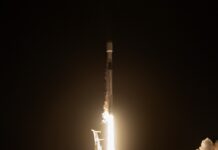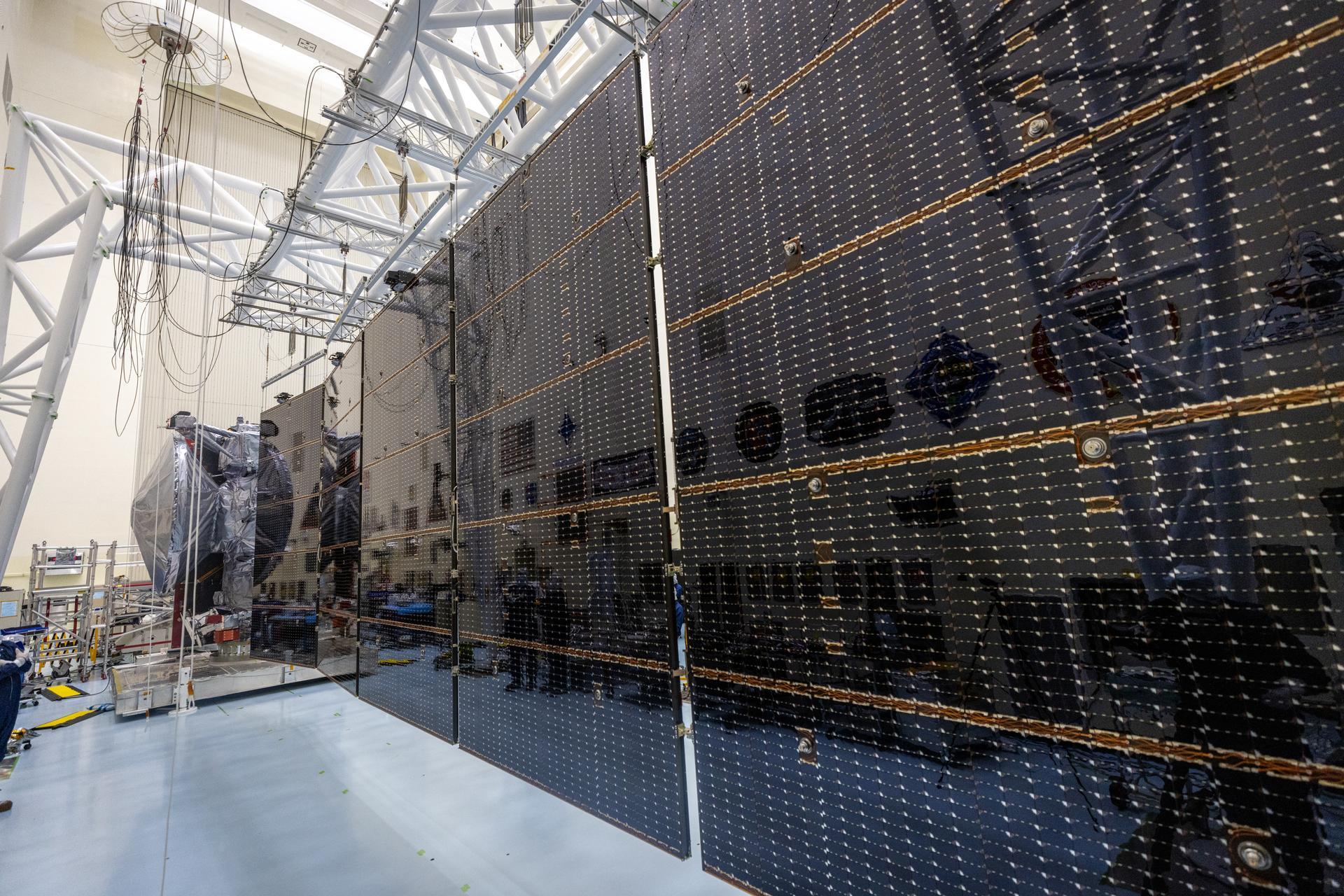—
On August 21, 2024, NASA engineers and technicians successfully deployed and tested the massive solar arrays of the Europa Clipper spacecraft. The size of these arrays is quite impressive, with each one measuring approximately 46.5 feet (14.2 meters) in length and 13.5 feet (4.1 meters) in height. This marks a significant milestone in the preparation of the Europa Clipper for its upcoming mission.
A Detailed Look at the Europa Clipper Mission
Scheduled for launch on October 10, 2024, the Europa Clipper is set to embark on a groundbreaking mission to Jupiter’s moon, Europa. This mission aims to conduct an in-depth scientific investigation of the celestial body. Scientists have long speculated that beneath Europa’s icy crust lies a salty ocean. This hidden ocean could potentially harbor the essential building blocks necessary for life, making Europa a prime candidate in the search for extraterrestrial life within our solar system.
Powering the Mission: The Role of Solar Arrays
The deployment and testing of the Europa Clipper’s solar arrays are crucial for the success of the mission. These solar arrays will be the primary source of power for the spacecraft as it undertakes numerous flybys of Europa. Given the considerable distance from the Sun, equipping the spacecraft with large, efficient solar arrays is essential to ensure it has a reliable power supply throughout its mission.
Understanding Solar Arrays: A Layman’s Guide
For those unfamiliar with the term, solar arrays are essentially a collection of solar panels. These panels are designed to capture sunlight and convert it into electrical power. In the case of the Europa Clipper, the solar arrays will gather sunlight and generate the electricity needed to operate the spacecraft’s instruments and systems.
The Importance of the Europa Clipper Mission
Europa has piqued the interest of scientists for many years due to its unique characteristics. The icy moon is believed to have a subsurface ocean that could be twice the size of Earth’s oceans combined. The Europa Clipper mission will use a suite of scientific instruments to analyze the surface and subsurface of Europa, providing invaluable data about the moon’s composition, geology, and potential habitability.
Instruments on Board: What Will Europa Clipper Study?
The Europa Clipper will be equipped with a variety of scientific instruments. These include:
- Ice-Penetrating Radar: This will help scientists determine the thickness of Europa’s ice crust and search for subsurface lakes.
- Magnetometer: This instrument will measure the magnetic field around Europa, which can provide clues about the ocean’s depth and salinity.
- Thermal Imaging System: This will map Europa’s surface temperatures to identify areas of recent geological activity.
- Mass Spectrometer: This device will analyze the composition of Europa’s thin atmosphere and any plumes that might erupt from the surface.
The Journey to Jupiter: Challenges and Expectations
Reaching Jupiter is no small feat. The journey to Europa will take several years, and the spacecraft will need to endure the harsh conditions of space. Once in Jupiter’s orbit, the Europa Clipper will perform a series of flybys of Europa, each one carefully planned to gather as much data as possible.
Why Focus on Europa?
Europa is one of the most intriguing moons in our solar system. The potential for an ocean beneath its icy surface makes it a compelling target for the search for life beyond Earth. If microbial life exists in Europa’s ocean, it would have profound implications for our understanding of life’s potential in the universe.
Good to Know: The History of Europa Exploration
Europa has been a subject of interest since the early days of space exploration. The Galileo spacecraft, which orbited Jupiter from 1995 to 2003, provided the first close-up images of Europa. These images revealed a surface covered in ice, with features that suggested a dynamic and active world.
Community Reaction and Reviews
The Europa Clipper mission has garnered significant attention from the scientific community and the general public. Many researchers are excited about the potential discoveries that could come from this mission. The successful deployment of the solar arrays has been met with enthusiasm, as it represents a crucial step forward.
Final Thoughts
The Europa Clipper mission is a testament to human curiosity and our desire to explore the unknown. The successful deployment and testing of the solar arrays are just one of many steps toward unveiling the mysteries of Europa. As the launch date approaches, anticipation continues to build for what could be one of the most exciting missions in the history of space exploration.
For more detailed information on how the Europa Clipper’s solar arrays will power its flybys, you can visit NASA’s official page here.
Image Credit
The image used in this article is credited to NASA/Frank Michaux, showcasing the impressive scale of the Europa Clipper’s solar arrays.
—
This article aims to provide readers with a comprehensive understanding of the Europa Clipper mission, its objectives, and the significance of its recent milestones. By breaking down the technical aspects and offering context, we hope to make this exciting mission accessible to everyone.
For more Information, Refer to this article.


































